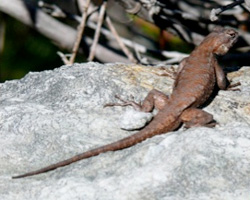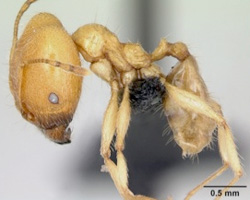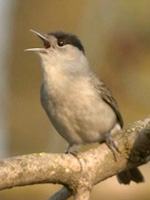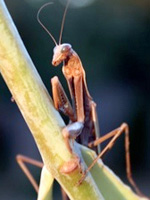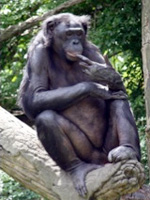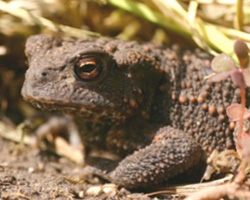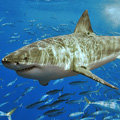« Prev Next »

Behavior is fundamental to living organisms. Bacteria actively move in response to chemical gradients, amoebas change body shape to wrap around food, and daffodils reorient flowers to face downwind in moderate winds (Berg 2000, Etnier & Vogel 2000). Animals with body architecture ranging from the cellular (i.e., sponges) to organ system (i.e., arthropods, echinoderms, and chordates) respond to stimuli from the internal and external environment.
The pathway leading from genes to behavior in the life of an individual is long and there are many intermediate steps along the way (Figure 1). To understand this pathway, it is useful to examine each of the major causes of behavior: genes, physiology, and development.
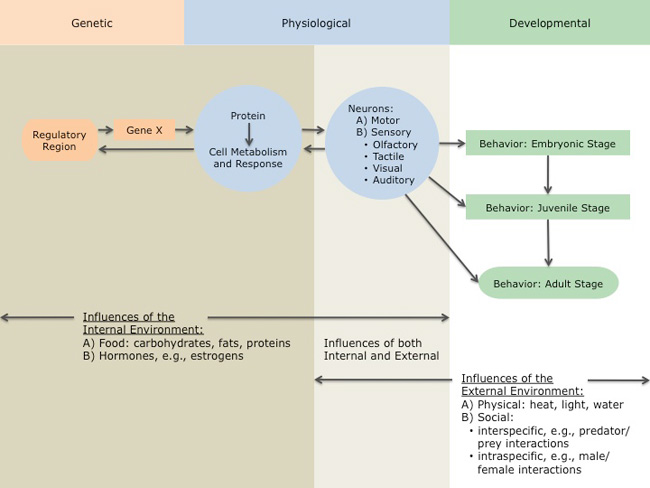
Animal behavior is influenced by genetic mechanisms. Recent work on the genetics of behavior in ants (Pheidole pallidula) evaluated how some workers in a colony shift from large, aggressive nest defenders to non-aggressive foragers (Figure 2; Lucas & Sokolowski 2009). Defenders are born predisposed to being aggressive by the expression of a single gene (ppfor). Newly-born foragers do not express the gene. When conditions in the nest warrant the shift, ppfor is suppressed in defenders, which causes them to become non-aggressive foraging workers.
Animal behavior is also influenced by physiological mechanisms. Chemicals known as corticosteroids often become elevated in individuals during stressful conditions. Under these circumstances reproductive and territorial behaviors are suppressed and escape behaviors are promoted instead (Wingfield et al. 1998). Research has shown that corticosteroids may also affect learning and memory acquisition (Thaker et al. 2010). To test this, researchers inhibited corticosterone elevation in Eastern fence lizards (Sceloporus undulatus) during an encounter with a novel attacker (Figure 3). They found that the inhibition impaired immediate escape responses by lizards and limited learning and recall during future encounters. Thus, elevated corticosteroids are necessary for not only antipredatory behaviors but also aversive learning in prey species.
Genes, physiology, and development vary among individuals of a population. Moreover, no two individuals experience the same internal and external environments. The outcome is variation in the behavior of individuals.
Evolution of Behavior
For example, many praying mantises (Figure 5) and spiders display a unique mating system called sexual cannibalism wherein one member of a male-female pair kills and consumes the other during courtship or copulation. Research conducted on the Mediterranean tarantula (Lycosa tarentula), a burrowing wolf spider, suggests that sexual cannibalism is adaptive for females (Rabaneda-Bueno et al. 2008). That is, cannibalistic females that had already mated with a male experienced higher reproductive rates and produced higher quality offspring relative to females that were not cannibalistic. It appears that in nature female Mediterranean tarantulas have difficulty finding and consuming high quality prey. Successful females behave in ways that maximize the probability of finding and cannibalizing males, and offspring inherit these behaviors.
Evolutionary changes over long stretches of geologic time may result in speciation and behavior may, in part, be responsible for this process. The blackcap (Sylvia atricapilla) is a migratory songbird that breeds in central Europe and winters in southern Europe and northern Africa (Figure 6). In the last several decades, biologists have observed variation in migratory behavior resulting in a small percentage of blackcaps that consistently overwinter in Britain (Rolshausen et al. 2009). "British" and "non-British" blackcaps migrate back to the same breeding forests in central Europe, except that individuals that winter in Britain arrive and begin nesting earlier and produce larger clutches of eggs. In addition, British-wintering blackcaps predominantly breed with each other and not with members of the other population in a process known as assortative mating. Therefore, these blackcap populations are reproductively isolated from each other despite breeding in close proximity. Natural selection and reproductive isolation have the potential to cause speciation through the accumulation of genetic and behavioral differences over time.
Measuring Behavior
Research in animal behavior is grounded in the scientific method (Figure 7). At the heart of behavior research (and indeed any area of inquiry into the natural world), is the art of asking questions. Questions drive the scientific process, for without good questions we would have no research projects to work on. Specific and standardized methods have been developed by behaviorists to study behavior objectively (e.g., Martin & Bateson 2007). The focus of behavioral research may range from groups of species to the genes that underlie an individual's behavior; studies may take place in the field, the laboratory, or both. One salient feature of behavioral research is to minimize anthropomorphism — that is, the mislabeling of actions of non-human animals as human-like thought processes and behaviors. The scientific method and standardized approaches to studying behavior have allowed biologists to understand the causes of behavior and how it evolves over time.
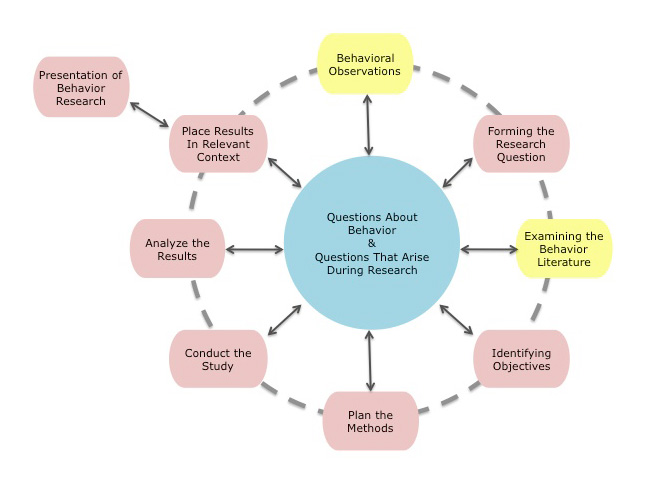
What Does Behavior Tell Us?
Studies in animal behavior inform us about our own behavior. Research on non-human primates continues to offer valuable perspectives into the causes and evolution of individual, social, and reproductive human actions. Evaluating the behavior of non-human animals has led to advances in how to improve the human condition, which includes technological inventions (e.g., flight via aircraft) and minimizing health risks. One recent example is the potential to successfully predict earthquakes through the use of toads (Bufo bufo), which were found to detect and respond to a seismic event before it happened (Figure 8; Grant & Halliday 2010).
Conclusion
Animal behavior is the result of multiple interacting forces related to an individual's genes, physiology, and development and the internal and external environments in which they live. There is genetic variation among individuals of a population for behaviors related to survival and reproduction. Successful behaviors are passed on to the next generation and may evolve over time. Researchers employ the scientific method and standardized protocols to measure and, thus, understand behavior. The results of animal behavior research inform ecology and evolution and assist in solving problems related to conservation. Many organizations and institutions specialize in providing information on animal behavior and opportunities for professional experiences (Table 1).
|
Table 1. Institutions and organizations that specialize in animal behavior: information, careers, and graduate school opportunities | |
|
Institution
|
Link
|
|
The Center for the Integrative Study of Animal Behavior |
http://www.indiana.edu/~animal/index.html |
| The Animal Behavior Society | http://www.animalbehaviorsociety.org |
|
International Society for Behavioral Ecology |
http://www.behavecol.com/pages/society/welcome.html |
| Association for the Study of Animal Behaviour | http://asab.nottingham.ac.uk/ |
|
Australasian Society for the Study of Animal Behaviour |
http://www.assab.org/ |
Acknowledgments
References and Recommended Reading
Berg, H. C. Motile behavior of bacteria. Physics Today 53, 24–29 (2000).
Etnier, S. A. & Vogel, S. Reorientation of daffodil (Narcissus: Amaryllidaceae) flowers in wind: drag reduction and torsional flexibility. American Journal of Botany 87, 29–32 (2000).
Grant R. A. & Halliday, T. Predicting the unpredictable; evidence of pre-seismic anticipatory behaviour in the common toad. Journal of Zoology 4, 263–271 (2010).
Hager, S. B. & Cosentino, B. J., et al. Window area and development drive spatial variation in bird-window collisions in an urban landscape. PLoS ONE 8, e53371 (2013).
Lucas, C. & Sokolowki, M. B. Molecular basis for changes in behavioral state in ant social behaviors. Proceedings of the National Academy of Sciences 106, 6351–6356 (2009).
Martin, P. & Bateson, P. Measuring Behaviour: An Introductory Guide. 3rd ed. Cambridge, UK: Cambridge University Press, 2007.
Parry, M. L. & Hanson, C.E., eds. Contribution of Working Group II to the Fourth Assessment Report of the Intergovernmental Panel on Climate Change: Climate Change 2007: Impacts, Adaptation and Vulnerability. Cambridge, UK: Cambridge University Press, 2007.
Rabaneda-Bueno, R. et al. Sexual cannibalism: high incidence in a natural population with benefits to females. PLoS ONE 3, e3484 (2008).
Robinson, W. R. The inquiry wheel, an alternative to the scientific method. Journal of Chemical Education 81, 791–792 (2004).
Thaker, M. et al. Stress and aversive learning in a wild vertebrate: the role of corticosterone in mediating escape from a novel stressor. American Naturalist 175, 50–60 (2010).
Wingfield, J. C. et al. Ecological bases of hormone-behavior interactions: the "emergency life history stage." American Zoologist 38, 191–206 (1998).
Wobber, V. et al. Bonobos exhibit delayed development of social behavior and cognition relative to chimpanzees. Current Biology 20, 226–230 (2010).


